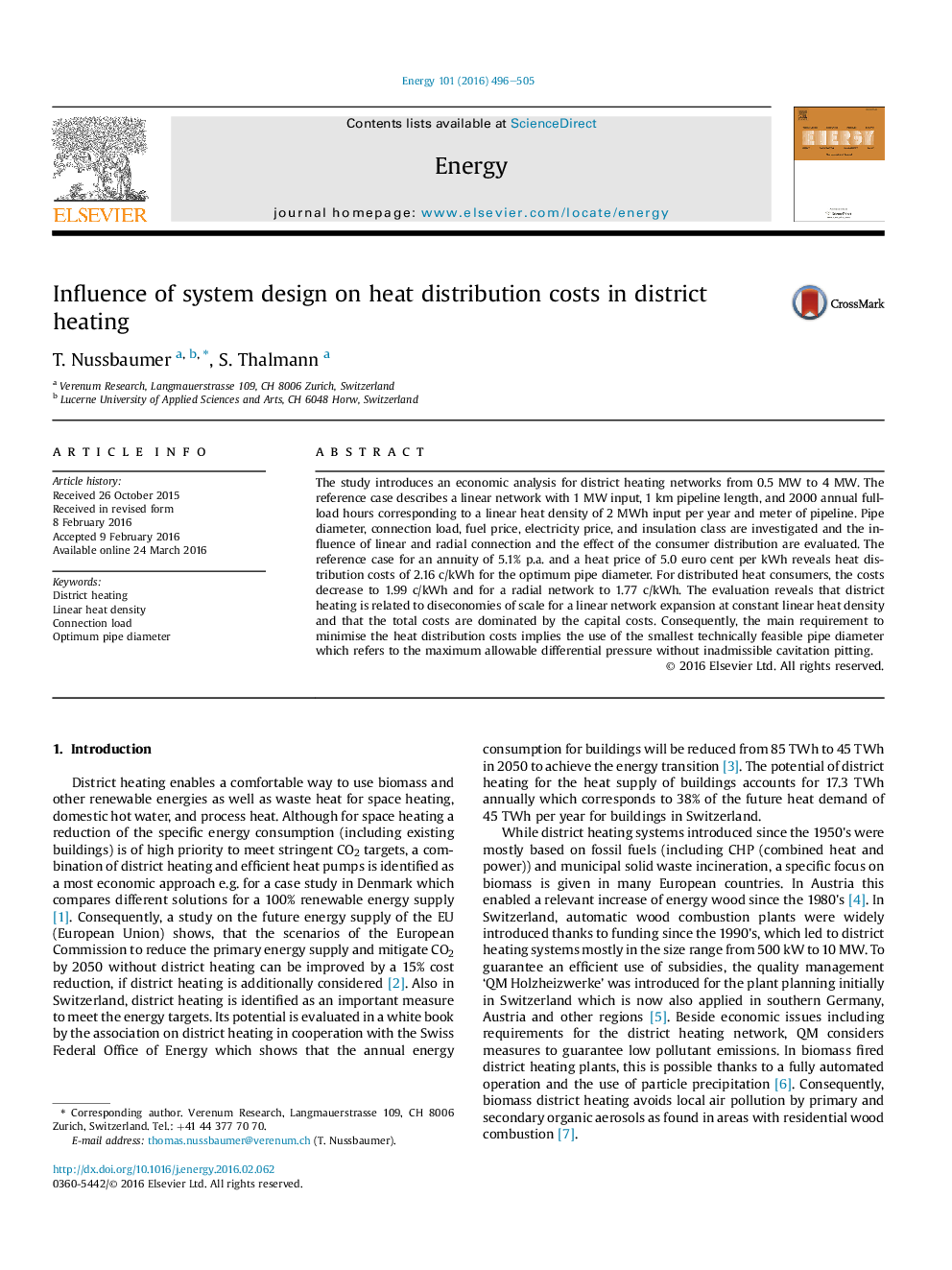| Article ID | Journal | Published Year | Pages | File Type |
|---|---|---|---|---|
| 1731050 | Energy | 2016 | 10 Pages |
•A sensitivity analysis for district heating networks is presented.•The capital costs dominate the total heat distribution costs.•The smallest technically feasible pipe diameter enables minimum total costs.•At constant linear heat density linear network expansion exhibits diseconomies of scale.•Radial network expansion and even distribution of consumers are favourable.
The study introduces an economic analysis for district heating networks from 0.5 MW to 4 MW. The reference case describes a linear network with 1 MW input, 1 km pipeline length, and 2000 annual full-load hours corresponding to a linear heat density of 2 MWh input per year and meter of pipeline. Pipe diameter, connection load, fuel price, electricity price, and insulation class are investigated and the influence of linear and radial connection and the effect of the consumer distribution are evaluated. The reference case for an annuity of 5.1% p.a. and a heat price of 5.0 euro cent per kWh reveals heat distribution costs of 2.16 c/kWh for the optimum pipe diameter. For distributed heat consumers, the costs decrease to 1.99 c/kWh and for a radial network to 1.77 c/kWh. The evaluation reveals that district heating is related to diseconomies of scale for a linear network expansion at constant linear heat density and that the total costs are dominated by the capital costs. Consequently, the main requirement to minimise the heat distribution costs implies the use of the smallest technically feasible pipe diameter which refers to the maximum allowable differential pressure without inadmissible cavitation pitting.
